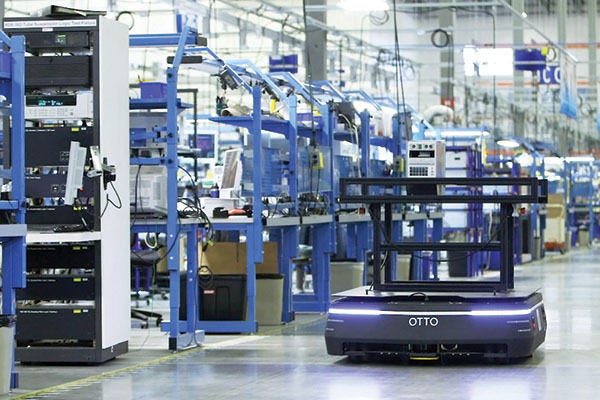Over the years, multiple U.S.-based medical equipment repair operations have consolidated into GE Healthcare’s 280,000-square-foot facility in Milwaukee, Wis. The facility consistently upholds lean manufacturing principles to achieve its primary mission to provide customers with reliable, consistent and timely repairs. As a result, hospitals can restore their operations quickly and focus on providing the best patient care possible. With this objective in mind, efficiency is at the core of all operations.
In previous repair centers, technicians pushed carts to move equipment between repair cells, shipping and other technicians. This manual process worked in batches, making material flow inefficient. Finished repairs would be added to other equipment on the nearest cart, which was pushed around to pick up other finished repairs prior to shipping. The time in which finished repairs reached shipping was dependent on which other types of equipment were already being repaired, leading to delays.
Additionally, other facilities suffered from wasted floor space due to the need for bulky carts and fixed infrastructure. This reduction of productive floor space decreased the number of repair cells and limited throughput.
“We needed to find an on-demand solution for moving materials throughout the facility,” says Patricio Espinosa, director of Americas Repair Operations for GE Healthcare. “[This] is a perfect solution because it gets materials where they need to be—when they need to be there.”
By implementing a self-driving vehicle, the repair center was able to improve its material flow and find new efficiencies in the repair process. Instead of batching parts to travel in a variety of directions, the automated solution enables pull-type supply chain management.
Repairs are now finished quickly, despite short lead times, because the automated material movement is based on actual demand. Rather than encumbering throughput by batching all material movement (regardless of priority), the self-driving vehicle delivers repairs to their destinations in an optimized workflow. When a technician has finished repairing a part, he/she will call a self-driving vehicle. Then, the vehicle will bring a new part that needs to be repaired and transport the finished part to shipping.
The company’s self-driving vehicles (and software) are now used to deliver parts for more than 2,000 medical equipment repairs each week.
In addition, the Milwaukee center’s repair cells are 40% smaller since implementing the vehicles, mainly because there’s no need for extra physical infrastructure or large material movement equipment. As a result, GE has raised its throughput per square foot, as productive floor space has increased by 66%.
OTTO Motors
(844) 733-6886
Article topics








